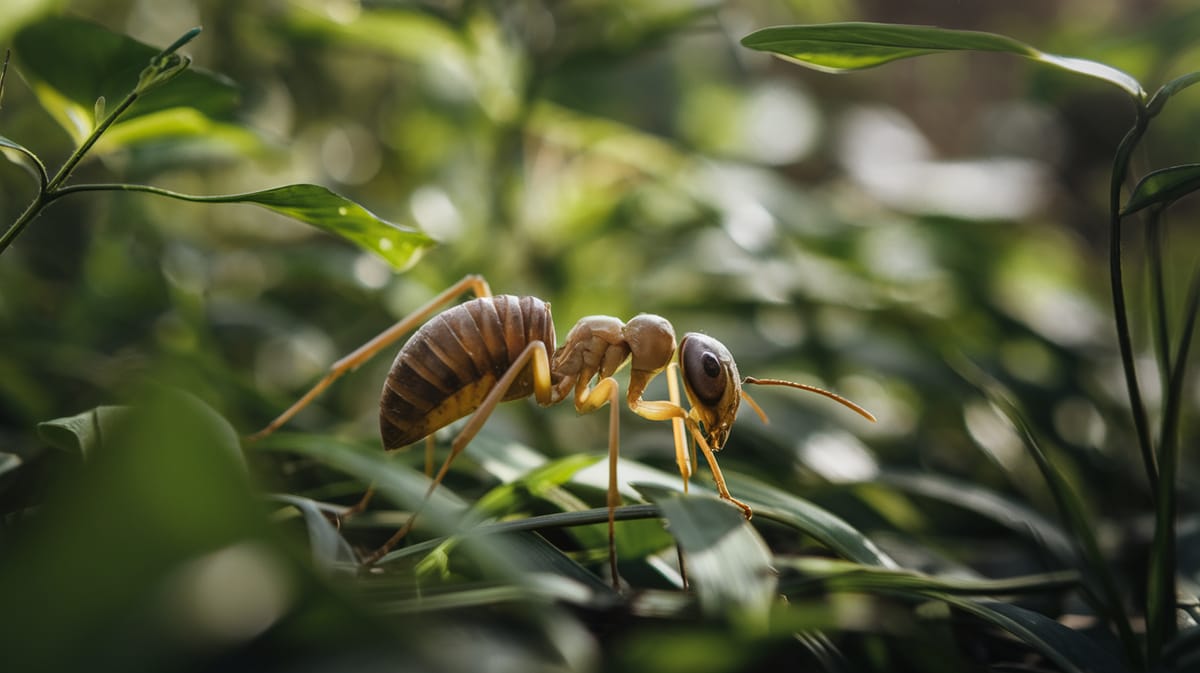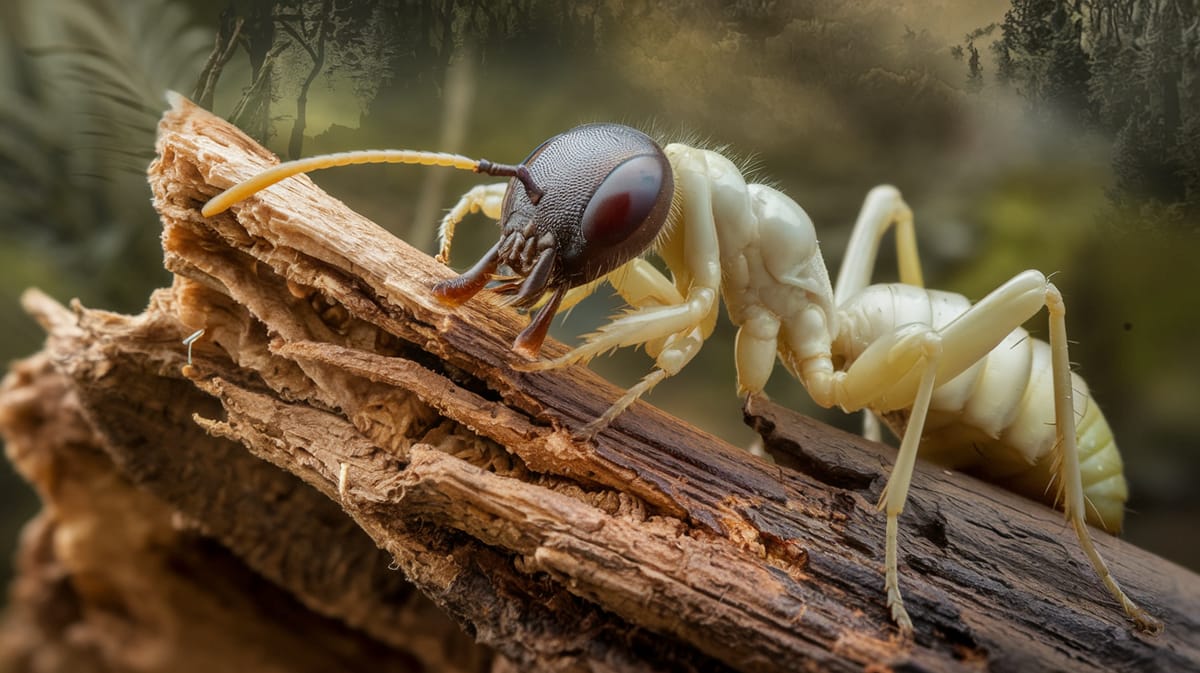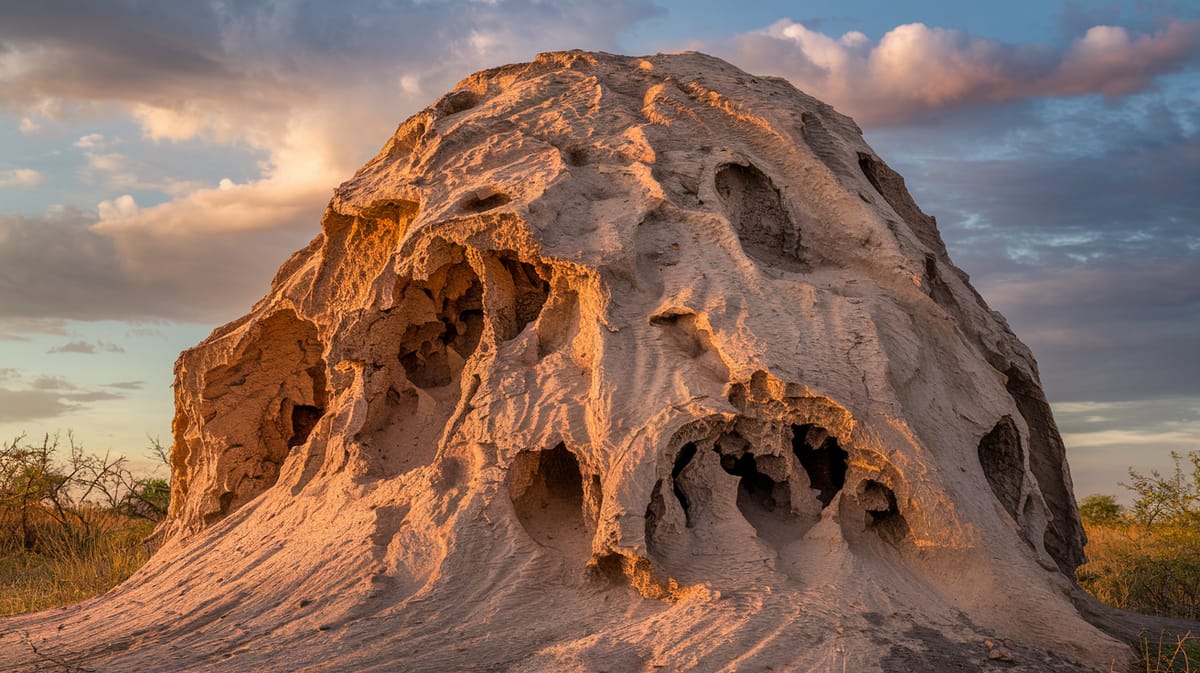Termite
Silent architects of the natural world, termites expertly decompose wood, recycling nutrients back into the ecosystem. Their complex social structures and teamwork are unmatched in the insect kingdom.

Key Insights at a Glance
Did You Know?
Taxonomy & Classification
Termites are social insects with complex colony structures, relying on cellulose-digesting symbionts. Their eusocial behavior is pivotal in ecological recycling. Let's understand the evolutionary journey and classification of these remarkable decomposers.
Global Presence
Coptotermes genus is one of the most widespread, with species found in tropical and subtropical regions globally, including 28 species identified.
Evolutionary Adaptations
Originating over 100 million years ago, termites have evolved symbiotic relationships with gut microbes to digest wood efficiently.
Lifecycle and Growth
A remarkable journey of transformation from Egg to Adult.
Egg
Eggs are laid by the queen and incubated in the colony, developing into nymphs under controlled temperature and humidity.
Nymph
Nymphs molt multiple times, gradually developing wings and maturing into worker, soldier, or reproductive castes.
Adult
Adults fulfill specific roles: workers maintain the colony, soldiers defend it, and reproductives establish new colonies.
Dietary Habits
Known for its ability to digest cellulose, this insect primarily consumes plant material, dead wood, and other organic matter.
| DIET TYPE | DESCRIPTION |
|---|---|
| Primary Diet | Feeds mainly on cellulose-rich materials like wood, leaves, and plant fibers, using specialized enzymes. |
| Secondary Diet | Consumes fungi and decaying wood, aiding digestion through symbiotic relationships with gut microorganisms. |
| Occasional | Occasionally feeds on paper products, cardboard, and even insulation materials when natural sources become scarce. |

Behaviour and Adaptations
Discover the remarkable capabilities that make termites extraordinary architects and social insects.
Social Coordination
Termites exhibit highly organized social structures with specialized roles, ensuring colony success.
Structural Engineering
Termites build complex mounds with temperature regulation and ventilation systems.
Cellulose Digestion
Termites efficiently digest cellulose with the help of symbiotic microorganisms, enabling them to consume wood.
Ecosystem Impact
Termites play a crucial role in maintaining ecological balance and sustainability.
Nutrient Recycling
Break down dead plant matter, returning essential nutrients to the soil.
Soil Aeration
Create tunnels that improve soil structure and water infiltration.
Carbon Cycling
Decompose organic material, contributing to carbon cycling in ecosystems.
Conservation Challenges
Understanding and addressing the major threats to Termite populations.
Habitat Loss
Deforestation and land conversion drastically reduce termite habitats.
Chemical Exposure
Pesticides harm termite colonies and disrupt ecosystems.
Climate Change
Altered weather patterns affect termite survival and activity.
Frequently Asked Questions
How long do Termite live?
Termite lifespans vary by caste. Worker and soldier termites typically live for one to two years. In contrast, queen termites can live significantly longer, often up to a decade or more under favorable conditions.
What do Termite eat?
Termites primarily feed on cellulose, a component of wood, plants, and paper. They digest cellulose with the help of symbiotic microorganisms in their guts, enabling them to break down tough plant fibers. This diet makes them important decomposers in ecosystems.
Are Termite poisonous?
Termites are not poisonous to humans or pets. They do not carry diseases and are generally considered more of a property nuisance due to their wood-eating habits rather than a direct threat to human health.
Are Termite endangered?
Most termite species are not endangered. They are widespread and abundant in many regions. Some specialized or habitat-specific species may face threats, but termites as a whole are not considered at risk.
What do Termite symbolize?
Termites often symbolize destruction and persistence due to their ability to cause significant damage to wooden structures over time. In some cultures, they may also represent cooperation and community because of their complex social structures and teamwork.
Do Termite bite?
Termites generally do not bite humans. Soldiers have mandibles for defense but rarely use them on people. They are more focused on protecting the colony from natural predators like ants rather than engaging with humans.
What color are Termite?
Termites are typically pale or light-colored, ranging from white to light brown. Worker termites are usually white or translucent, while soldiers and reproductive termites can be darker, particularly during swarming when they develop wings.
Does a Termite have wings?
Only reproductive termites, known as alates, have wings. These swarmers develop wings to leave the colony and establish new ones. After mating, they shed their wings. Worker and soldier termites remain wingless throughout their lives.
What does a Termite look like?
Termites are small, soft-bodied insects with straight antennae and a broad waist. Workers and soldiers are wingless, while reproductive termites have wings during the swarming phase. They resemble ants but lack the narrow waist and elbowed antennae of ants.
Is a Termite an insect?
Yes, termites are insects. They belong to the order Blattodea, closely related to cockroaches. Termites are social insects living in colonies with a division of labor among workers, soldiers, and reproductive individuals.
Related Insects
Discover insects with similar characteristics to Termite - including shared habitats, diets, and taxonomic classifications
Share this profile
Help others discover Termite
